
While using the internet, you may have come across the term “proxy configuration.” Many users get confused by the “proxy settings” option that appears when connecting to Wi-Fi on their phones or computers. What is it? Should it be enabled or disabled? How does it affect internet access? This article will answer all your questions about proxy configuration and help you better understand this networking feature.
“Configuring a proxy” means routing your internet requests through an intermediary server—known as a proxy server—so you can indirectly access target websites or services. In simple terms, a proxy acts as a middleman between you and the internet.
Once a proxy is set up, your device doesn’t directly connect to websites. Instead, it sends requests to the proxy server, which then accesses the site on your behalf and returns the results. This process is useful in many scenarios.
Here are the main types of proxies:
HTTP Proxy: Used for web browsing; can cache web pages to speed up access.
HTTPS Proxy: Supports encryption; ideal for secure browsing.
SOCKS Proxy (e.g., SOCKS5): A versatile protocol used for gaming, P2P downloads, etc.
Transparent Proxy: Operates without user awareness; typically configured by network administrators for content filtering or monitoring.
Residential Proxy: Uses real users’ IPs, making it harder to detect or block; suitable for cross-border business or social media automation.
Datacenter Proxy: Offers high speed but is easier to detect; suitable for scenarios where speed is crucial and identity sensitivity is low.
There are several reasons to use a proxy:
Bypass Geo-Restrictions: Access websites or services not available in your region (e.g., foreign videos, social media platforms).
Hide Your Real IP Address: Enhance privacy and avoid tracking.
Improve Speed: Use proxy caching or routing to accelerate access.
Prevent Account Bans and Manage Multiple Accounts: Common in e-commerce, social media, and web scraping.
Content Filtering and Auditing: Often used by schools or companies to restrict access to certain websites.
It depends on whether you need to use a proxy:
If you’re on a corporate or school network, a proxy may already be configured—leave it enabled.
If you’re using tools to bypass internet restrictions, managing overseas accounts, or running automation software, you need to configure a proxy manually.
If you’re just browsing or watching videos casually, it’s best to keep proxy settings off to avoid speed issues or connection failures.
Disabling the proxy means your device connects to the internet directly. Here’s what that entails:
Faster Access: Skipping the proxy step can boost speed.
Blocked Content: Some resources may become inaccessible, especially if a proxy was used for bypassing restrictions.
IP Exposure: Your real IP address will be visible, revealing your location and identity.
Reduced Security: Advanced proxy features like encryption or filtering will no longer work.
Wi-Fi proxy settings are especially useful in these scenarios:
Configure different proxies for different Wi-Fi networks (e.g., disable proxy at home, enable it at work).
Allow apps and browsers to access the internet through a single gateway—useful for traffic control, behavior monitoring, or bypassing restrictions.
Note: If you configure an invalid or incorrect proxy under Wi-Fi, it may prevent normal internet access.
The process differs slightly across devices and operating systems. Here’s how to do it on common devices:
Open Settings → WLAN → Select your connected Wi-Fi.
Tap “Modify Network” → “Advanced Options.”
Choose “Manual” proxy, and input the proxy server’s IP and port.
Save the settings.
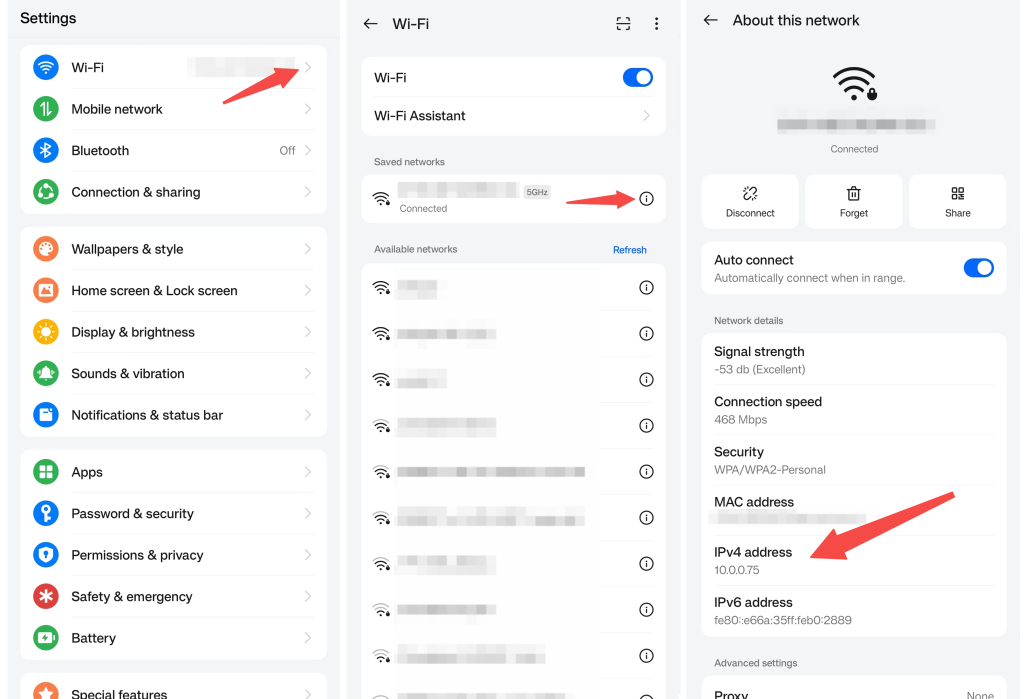
Go to Settings → Wi-Fi → Select your network → Configure Proxy.
Choose “Manual”, then enter the server address and port number.
Save and exit.
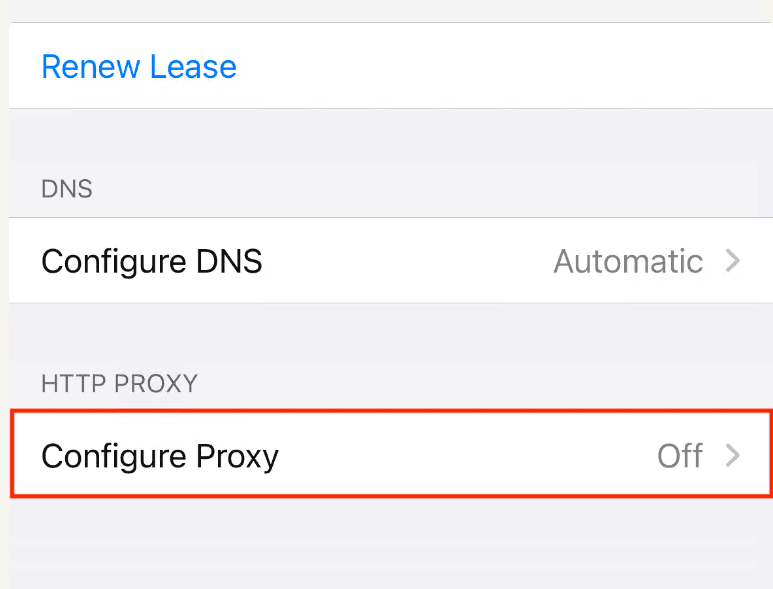
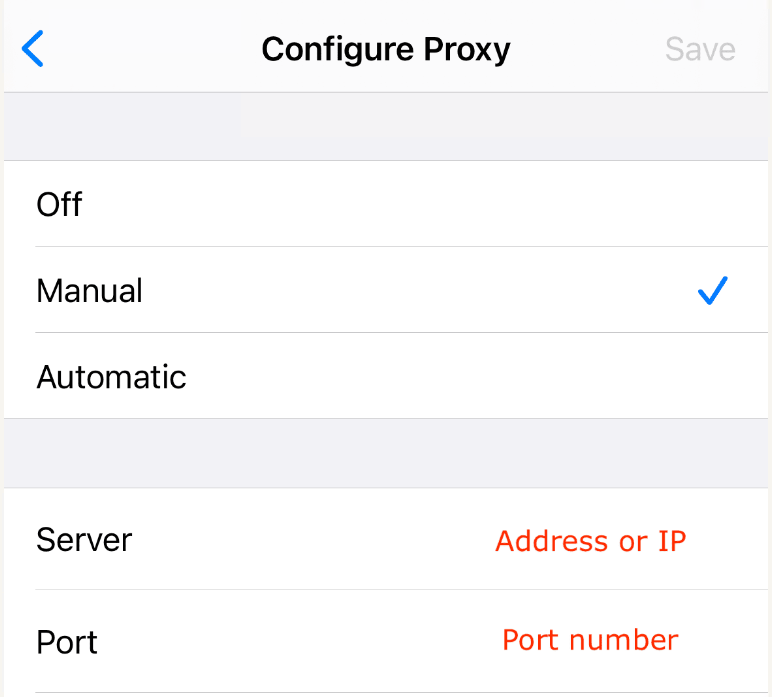
Go to Settings → Network & Internet → Proxy.
Enable “Manual proxy setup”, then enter the address and port.
Click “Save”.
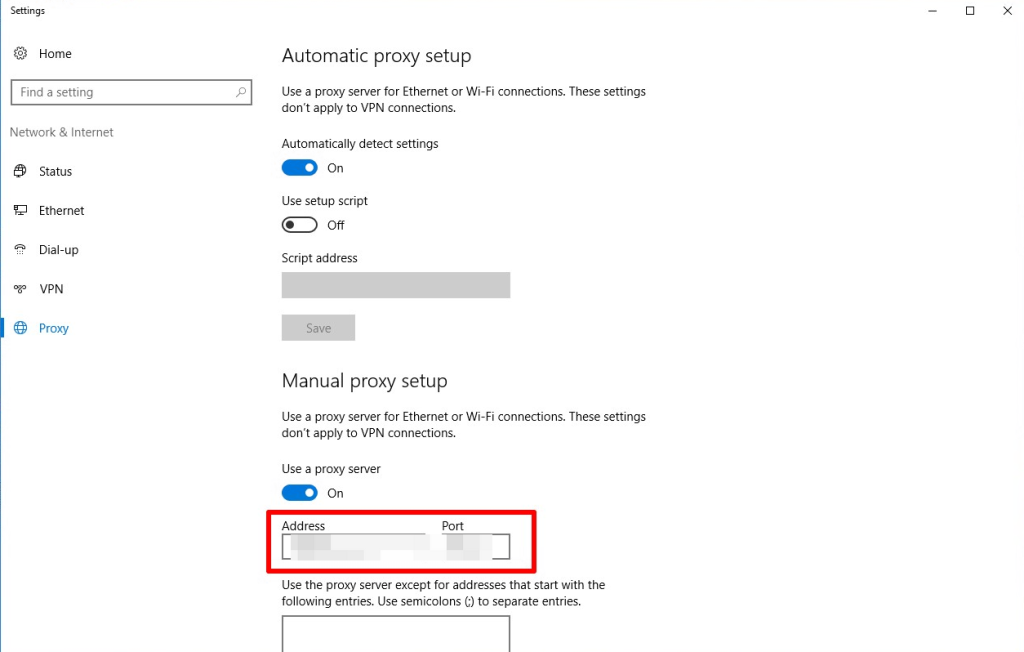
Go to System Settings → Network → Advanced → Proxies.
Select the appropriate proxy protocol (e.g., SOCKS) and enter the address and port.
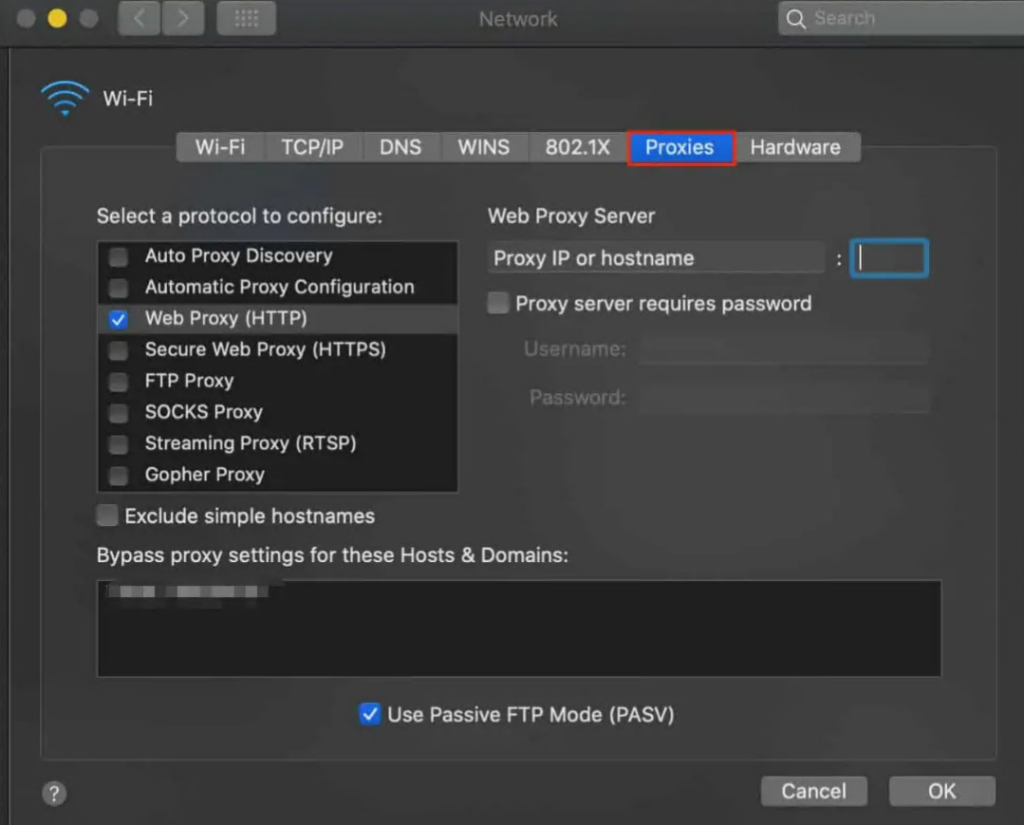
To check whether your proxy is successfully configured, consider the following method.
Test IP address changes: Visit sites like ip.sb or ipinfo.io to see if your IP reflects the proxy address.
Check internet access: Try browsing websites or using apps to confirm normal connectivity.
Use speed test tools: Tools like Speedtest can measure your proxy connection’s speed.
Review proxy logs or dashboard: Some proxy services offer real-time monitoring for connection status and data usage.
Proxy failures can occur for several reasons. Here are common causes and their solution.
Proxy IP is invalid or banned: Try switching to a new proxy node.
Incorrect port configuration: Make sure the port number matches your provider’s instructions.
Expired account or bandwidth limit reached: Check if your subscription has ended or traffic quota is used up.
Local network issues: Test if the internet works normally without a proxy.
Target website blocks proxies: Consider using more stealthy residential IPs or modifying your access method.
We recommend using a professional service like Cliproxy, which offers high availability and strong anonymity for reliable proxy connections.
Proxy settings may sound technical, but they’re not difficult once you understand the basics. By selecting the right proxy service and configuring it properly, you can strike a good balance between privacy, security, and internet freedom.
If you’re working in cross-border business, e-commerce, or managing social media accounts, trying a high-quality proxy service can greatly enhance your network experience.
For more configuration guidance or to find a reliable proxy provider, we recommend giving Cliproxy a try. It’s user-friendly, cross-platform, and suitable for beginners and advanced users alike.


